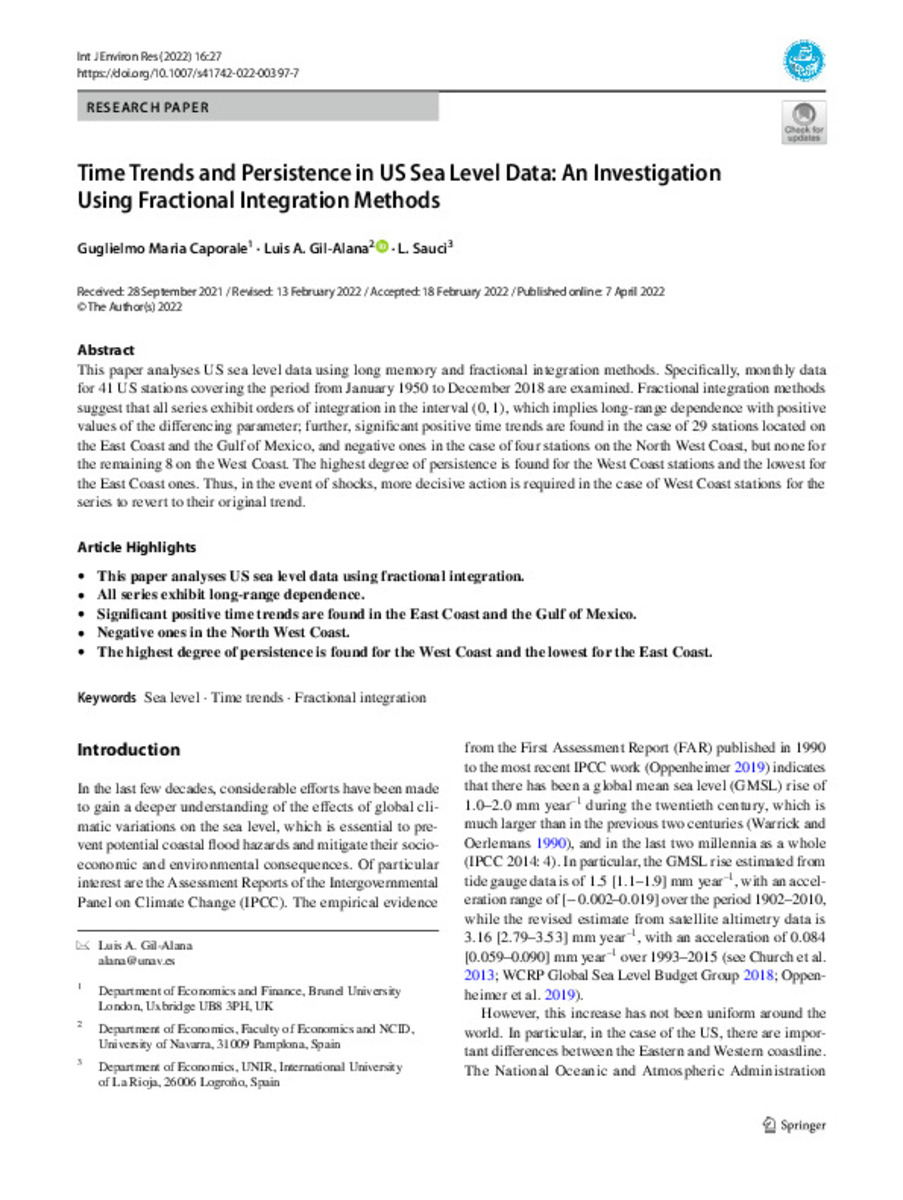Time trends and persistence in US sea level data: an investigation using fractional integration methods
Keywords:
Sea level
Time trends
Fractional integration
Note:
This article is licensed under a Creative Commons Attribution 4.0 International License
Citation:
Caporale, G.M. (Guglielmo M.); Gil-Alana, L.A. (Luis A.); Sauci, L. (L.). "Time trends and persistence in US sea level data: an investigation using fractional integration methods". International Journal of Environmental Research. (27), 2022,
Statistics and impact
0 citas en

Items in Dadun are protected by copyright, with all rights reserved, unless otherwise indicated.







